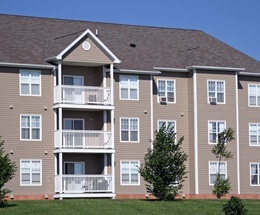 As college students search for independence, a new challenge for this school year could be renting an apartment.
As college students search for independence, a new challenge for this school year could be renting an apartment.
If you’ve been down this road before, you know renting an apartment for a college student can be stressful. If this is your first time, there are many things to keep in mind.
Unfortunately, when it comes to renting an apartment in your student’s college town, you’ll notice that rent prices can be through the roof and places may be in poor condition.
Here are some tips to help you and your college student through the process.
1. Do your homework. Before scheduling an appointment to view the apartment, do your research. Some items to think about are:
- Is there public transportation nearby?
- Is it a residential area or business district?
- If it is a business district, what type of work is performed there?
- Are retail stores and restaurants within walking distance?
Use the power of the internet to your advantage.
- Look for online reviews from previous renters.
- Compare and contrast different properties.
- Use tools such as Google Earth to look at the neighborhood as well as the condition of the property.
- If something looks too good to be true, it may be a scam; proceed with caution.
2. Pay a personal visit. Once you have selected apartments of interest, visit each one. Make sure the pictures online accurately reflect the condition of the property. The last thing you want to do is rent an apartment without seeing it. A visit allows you the opportunity to:
- See the actual size. This is a nice opportunity to see if their furniture will fit.
- Check out the quality of the appliances.
- Look in cupboards and closets. Keep an eye out for mouse droppings.
- Identify preexisting damages such as holes in the walls or carpet stains.
- Run the water in sinks and showers and flush the toilet.
3. Coach your kids. This is an opportunity for your kids to enter the realm of adulthood. Discuss with them what to look for and questions to ask. Lights burned out in the hallway or empty beer cans may not seem like a big deal, but can provide a glimpse of poor maintenance schedules or rowdy neighbors. While these things may not be a big deal at the time, they could be after signing a 12-month lease.
4. Discuss your expectations. Property owners may not be comfortable renting to your college student due to lack of income. Therefore, you may be asked to co-sign the lease. Before you sign on the dotted line, discuss your expectations with your student. It may not even be a bad idea to create a contract between the two of you. Once you co-sign, any damages that occur are your responsibility.
5. Make sure the lease is in writing. Signing a lease with a large apartment complex often leads to paperwork that is more thorough. Individual property owners may not follow a structured approach. If they don’t have the appropriate paperwork in place, consider renting somewhere else.
6. Test their smartphone. Depending on the construction of the building or their phone company, your student’s smartphone may not work. Have them walk through each room to make sure it works. I’m sure you’ll want to get a hold of them from time to time.
7. Understand the pet policy. Simply having a pet may cause you to forfeit your security deposit even if your pet doesn’t cause any damages.
8. Don’t forget to purchase renters insurance. Most landlords’ insurance policies cover only the building, not what’s in it. Many students think because they’re in college, they don’t have anything valuable to insure. Imagine if they lost everything in a fire. The cost to replace necessities adds up quickly. To learn more about renters insurance, check out the blogs below.
Renters Coverage? Why do I need that?
Renters insurance. A smart choice for college students
BUY VS RENT? Either way homeowners (aka renters) insurance is needed!
9. Make multiple visits. Visiting at night or during poor weather conditions can paint an even better picture for the both of you. No one wants to rent a place with roof that leaks or one that has poor insulation. Poor insulation can lead to increased heating costs.
10. Pros and cons. After each visit, identify the pros and cons while they’re fresh in your mind.
Do you have any tips or information you’d like to share? I’d love to hear from you. Please share them in the box below.





